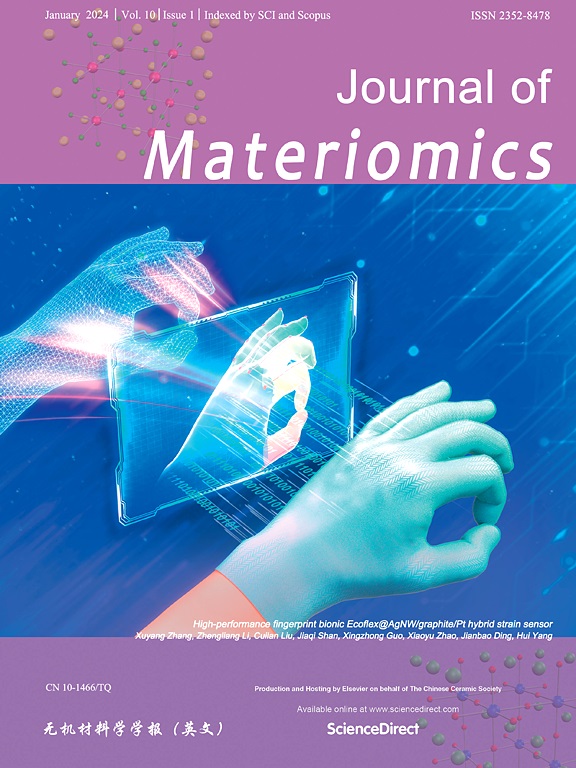Enhancement of thermoelectric properties of p-type bismuth telluride bulk composites with AgTiO2 nano particles via spray coating and hot deformation process
IF 8.4
1区 材料科学
Q1 CHEMISTRY, PHYSICAL
引用次数: 0
Abstract
We aimed to enhance p-type Bi0.4Sb1.6Te3.4 (BST) composite's thermoelectric (TE) properties by minimizing thermal conductivity through hierarchical phonon scattering via nano Ag-coated TiO2 (Ag/TiO2). Hot deformation (HD) was employed to induce multi-scale microstructures in these high-performance p-type TE materials, affecting electrical and thermal transport properties through improved textures and donor-like effects. Our optimization strategy included creating grain boundaries, multiple phonons scattering centers, and introducing high-density lattice defects, significantly reducing lattice thermal conductivity. The combined effects led to a noticeable improvement in the figure of merit (zT) across the temperature range, with all TE parameters measured along the in-plane direction. In the case of the hot-deformed Bi0.4Sb1.6Te3.4 alloy, the maximum zT reached 1.31 at 350 K, while the average zT (zTavg) was 1.17 in the range of 300–400 K, suggesting promising potential for near room temperature TE power generation and solid-state cooling.

求助全文
约1分钟内获得全文
求助全文
来源期刊

Journal of Materiomics
Materials Science-Metals and Alloys
CiteScore
14.30
自引率
6.40%
发文量
331
审稿时长
37 days
期刊介绍:
The Journal of Materiomics is a peer-reviewed open-access journal that aims to serve as a forum for the continuous dissemination of research within the field of materials science. It particularly emphasizes systematic studies on the relationships between composition, processing, structure, property, and performance of advanced materials. The journal is supported by the Chinese Ceramic Society and is indexed in SCIE and Scopus. It is commonly referred to as J Materiomics.
 求助内容:
求助内容: 应助结果提醒方式:
应助结果提醒方式:


